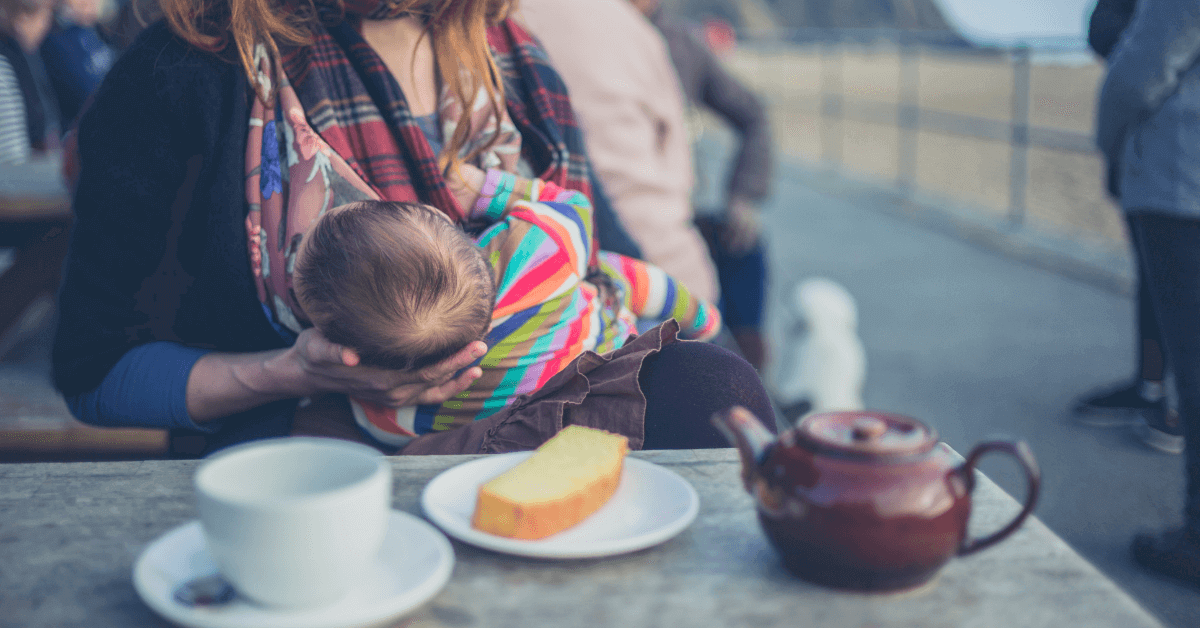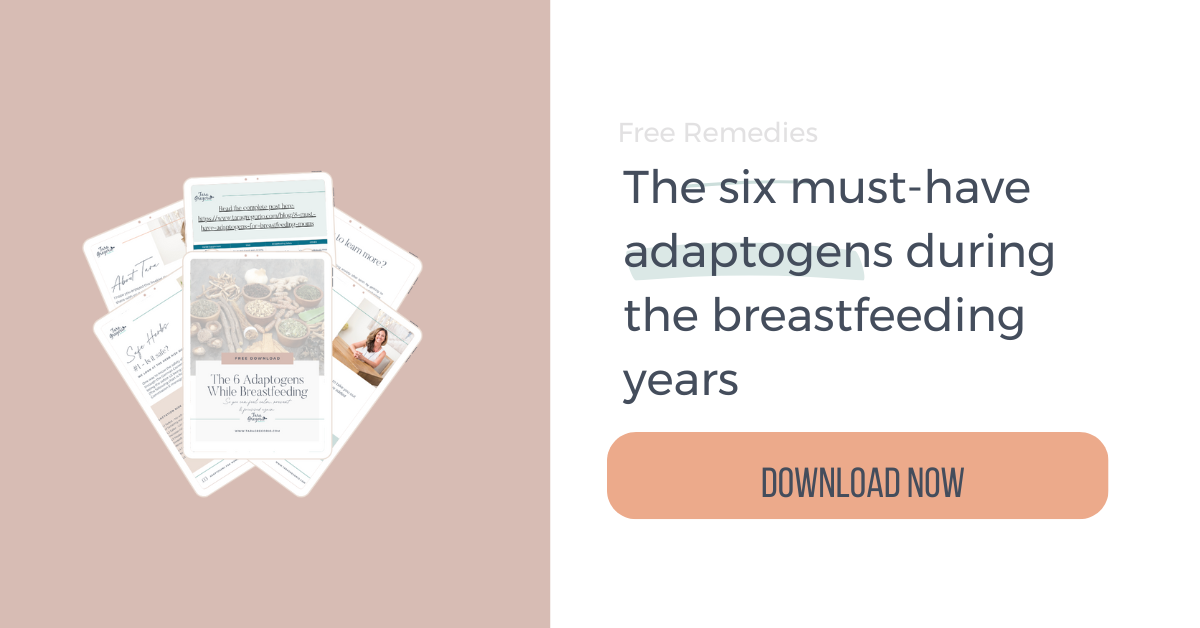16 Herbs Every Breastfeeding Mom Should Know About
Wondering how to use herbs safely while nursing?
Botanicals can be a beautiful addition to the breastfeeding years and help you shift into each season with grace and ease.
In this post, I'm going to share my 16+ favorite herbal remedies to help you navigate the various symptoms you'll experience while breastfeeding and which botanicals are safe for you.
So, the #1 question moms always want to know is...
What to drink to increase breast milk naturally at home
Galactagogues are the main category of herbs you'll want to include to boost your milk supply.
But, keep in mind, that you'll also want to address your stress as this can also decrease your milk supply.
So, if you're experiencing a decrease in milk consider adding in the botanicals I suggest, AND work on decreasing your stress.
The first 12 botanicals are to boost your milk supply. You can buy them as a tea, or tincture or eat oats daily for breakfast.
12 Galactagogues Herbs To Increase Your Milk Supply
Marshmallow Root (Althea Officinalis)
Dill (Anethum graveolum)
Oats (Avena sativa) A cup of oatmeal every morning may help soothe digestion and increase milk supply!
Caraway (Carum carvi)
Blessed thistle (Cnicus benefictus)
Fennel Seed (Foeniculum vulgare)
Goat's rue (Galega officinalis)
Barley (Hordeum vlugare)
Hops (Humulus lupulus)
Anise seed (not Star anise) Pimpinella anisum
Fenugreek (Trigonella foenum-graecum)
Chaste berry (Vitex angus castus)
{Pin the image to make the recipe}
How to Produce More Breast Milk Naturally?
Here are 4 little steps...
Try eating oatmeal in the morning
Make Lactation cookies. Recipe here or Bars here
Drink tea of stinging nettles and milky oat tops or purchase our Lady of la Leche here https://amzn.to/3ArnZRL or Earth Mama Milkmaid tea here>https://amzn.to/3R5DNPN
Allow time for YOU. I know, I know.. Don't laugh. It's important to try to figure out HOW you can relax while raising children:)
Too much milk? Try these herbs to decrease your milk supply.
Adaptogens while breastfeeding
Adaptogens are a category of herbs that help us "adapt" to stress. They are life-changing for the momma struggling with the baby blues or PPD or just the daily stresses of raising a family.
The #1 Adaptogen that is safe to take while breastfeeding is Ashwagandha. {along with Tulsi and Stinging Nettles as well}
For a complete list of adaptogens while breastfeeding, see this post: https://taragregorio.com/8-must-have-adaptogens-for-breastfeeding-moms/
--------
Ashwagandha while Breastfeeding
#13 Ashwagandha Tincture (Withania somnifera)
Known as Category 1, a safe adaptogen during breastfeeding, Ashwagandha can help reduce stress and ease the anxiety that mothers often experience.
#14 Phytolacca for Mastitis
The best remedy for mastitis at home is homeopathy. The #1 remedy is called phytolaca.
Home remedies for colds during breastfeeding
Wondering which herbs are safe during the nursing years. Download this helpful resource sheet to know the remedies we know, love, and trust.
The next two botanicals you can use EXTERNALLY to heal ANY skin cuts, scrapes, or wounds, even for your children!
#15 Calendula Externally
Botanicals For Sore, Cracked Nipples
Calendula is a beautiful botanical for sore, cracked nipples and for diaper rash!
Calendula is used topically and EXTERNALLY for the treatment of minor inflammations of the skin. Typically used as an oil or salve. Apply to cracked, dry nipples to prevent infection and soothe inflammation, and wipe thoroughly before breastfeeding.
Caution: The oil or salve may stain clothing, and although there are no known risks with minimal ingestion, wipe off your nipple before breastfeeding again.
#16 Chamomile Externally
The German Commission E. approves chamomile for the treatment of skin inflammation and bacterial skin diseases. Chamomile Matricaria oil has demonstrated activity against Candida albicans at the concentration of .7%.¹ {think thrush!}
Taking preventative steps to support your immune system, rest, and applying an herbal salve will prevent cracked nipples, which may increase your risk of mastitis.
Chamomile is also safe to drink as tea to help soothe your nerves and reduce bloating that may occur for you and your baby. Keep in mind, if you or your baby's father has an allergy to Chamomile, you'll want to avoid this botanical.
>>>Euphorical Herbals has amazing products for natural breastfeeding remedies.
Additional tips to reduce cracked nipples
Ensure proper latching
If nipples are sore or cracked, gently rinse and pat dry after each feeding
Avoid the use of breast pads when possible and spend time without a bra
Wash nursing bras regularly to avoid infection
Treat oral thrush in the newborn with yogurt and probiotics to prevent the spread to the nipple. You can coat the inside of your baby's mouth with yogurt or offer them an infant probiotic. Mom can take one as well!
Apply an herbal salve several times a day after nursing and wipe off before nursing again
When there is an infection, use an antimicrobial, like Echinacea, internally to support the mother's immune system
Conclusion
Botanicals can provide great support during the breastfeeding years to reduce medications and save your child's gut health. I found great comfort in these remedies when I was trying to breastfeed twins!
Stress is one of the most overlooked pieces of the puzzle during the postpartum period. It's important to learn how to soothe your nervous system now so that when you begin weaning, you have many botanicals to reach for to help you through the transition of motherhood.
I teach you how on my YouTube channel @tarajgregorio.. I'd love to know if you've tried any of these botanicals.
Write in the comment area if you have any questions, and I'll be sure to get back to you.
xoTara
P.S. What are your thoughts? Have you tried any of these? Let me know in the comment area below.
References
3. https://pediatrics.aappublications.org/content/115/2/496.full ↩
4. American Herbal Products Association; Botanical Safety Handbook ↩
5. Hales; Medications and Mother’s Milk: https://amzn.to/35XZFq5- more about conventional medication and nursing ↩
7. Bone & Mills: Principles and Practice of Phytotherapy ↩
8. Aviva Romm: Botanical Medicine of Women’s Health- Categories from the German Commission E. ↩
9. Brinker, Francis: Herbal Contraindications and Drug Interactions ↩








